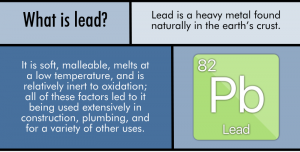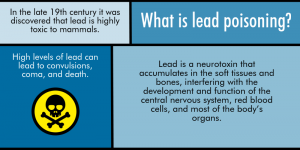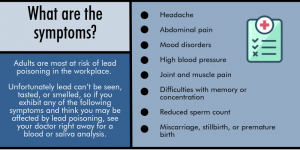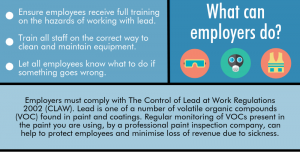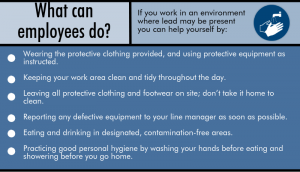Lead testing in the workplace: why is it so important?
For a long time, lead appeared to be something of a miracle metal. One of the earliest metals discovered by humans, it’s soft, malleable, and has a low melting temperature, making it perfect for a variety of applications. Back in the days of the Roman Empire it was used to build water pipes, aqueducts and even cooking pots (apparently to enhance the flavour of food!), whilst the ancient Egyptians used it as an ingredient in kohl, a cosmetic applied to the eyes. In more modern times, it was used in ammunition, ceramic glazes, paints and protective coatings.
Unfortunately, in the late 19th century it was discovered that lead is actually incredibly toxic to mammals. A potent neurotoxin, it accumulates in the bones and soft tissues of the body. This can eventually lead to convulsions, coma and even death at dangerously high levels. This was a huge health hazard. For instance, it was often used as an additive in paint, which it oddly gave a sweet taste to. This made tasting lead paint very tempting for young children, leading to childhood lead poisoning becoming endemic in certain areas. It’s also since been theorised that the Roman’s fondness for lead hastened the Empire’s downfall!
Children are most susceptible to lead poisoning simply because their bodies are smaller. However, bans and regulations around the world mean children are now unlikely to come into contact with lead in their day to day lives. In fact, the group now most at risk of lead poisoning are adults working in the smelting, refining, alloying and casting industries.
Lead is impossible to smell, see or taste, so until symptoms of lead poisoning appear it’s hard to know it’s there. This means lead testing is essential in high risk workplaces to protect against long-term health problems. If it’s present, adequate guidelines should be put in place for the healthy, safety, and general wellbeing of the workforce. Paint Inspection Ltd have created this handy infographic which goes into more detail about the dangers of lead in the workplace…

